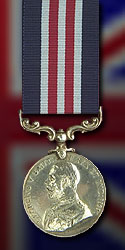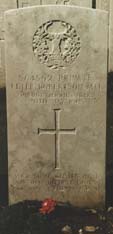In Memory ofPETER ROBERTSON MMPrivate
|
|
Additional Information: Click on images to view details
|
Son of Peter and Margaret Robertson, of Woodend Cottage, Kennethmont, Aberdeenshire. Native of Kennethmont. Peter Robertson was born at Brae of Cults on Aug 12th 1889 to Peter Robertson and Margaret Mackie. He was born at Kennethmont and enlisted in Aberdeen. He died of wounds (gassed) at St John's Hospital, Etaples. Served France & Flanders War & Victory Medals, Military Medal Awarded The Military Medal for gallantry in the field. LG 16/7/1918. The heroic deed cannot now be ascertained but almost certainly took place during the gas attack on 19th May at Hinges Chateau. Peter may have gone back for injured gassed comrades or given up his respirator for another man to use. He died 10 days later due to the effects of being gassed. The letter S prefixing the service number indicates a wartime enlistment. The Life of a Regiment, entry May 1918 1 GH, Battalion Diary entry, May 1918,
La Bassee Canal near Hinges It is known that Peter died of wounds ( the effects of gassing) in the St John's Ambulance Hospital at Etaples on 30th May. It is likely these injuries were received during the gas shell attack of 19th-20th May although there were a few casualties from gas shelling on the 26th. He would have been treated initially at a Front Line casualty clearing station before being transferred to Etaples, 45 miles away on the Channel coast.
Service notes 4/8/1914 at Plymouth: 8th Bde,
3rd Division |
Commemorative Information
| Cemetery: | ETAPLES MILITARY CEMETERY, Pas de Calais, France |
| Grave
Reference/ Panel Number: |
LXVI. E. 24. |
|
Location: |
Etaples is a town about 27 kilometres
south of Boulogne. The Military Cemetery is to the north of the
town, on the west side of the road to Boulogne. |
| Historical Information: |
During the 1914-18 war, the neighbourhood of the Cemetery became the scene of immense concentrations of British reinforcement camps and of British hospitals. It was remote from attack, except from aircraft, and it was accessible by railway from either the northern or the southern battlefields. In 1917, 100,000 troops were camped among the sand dunes, and the hospitals (which included eleven General, one Stationary and four Red Cross Hospitals and a Convalescent Depot) could deal with 22,000 wounded or sick. In September 1919, ten months after the Armistice, three hospitals and the Q.M.A.A.C. Convalescent Depot remained. The earliest burial in the Cemetery dates from May 1915. There are now nearly 11,000, 1914-18 war casualties commemorated in this site and over 100 from the 1939-45 War. The cemetery covers an area of 59,049 square metres. The graves lie below three terraces, the midmost of which carries the War Stone and two pylons, and the highest is dominated by the Cross. The cemetery was designed by Sir Edwin Lutyens. |


